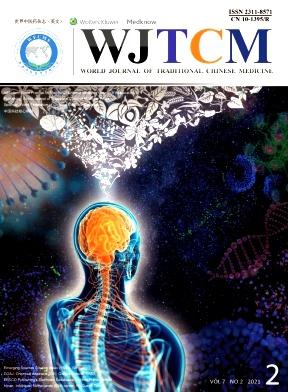2019冠状病毒病预后预测的两个可解释模型的验证和改进
IF 3.2
3区 医学
Q1 INTEGRATIVE & COMPLEMENTARY MEDICINE
引用次数: 0
摘要
目的:验证两个提出的2019冠状病毒病(新冠肺炎)预后模型,分析不同模型的特征,考虑模型在预测不同结果方面的性能,并为人工智能(AI)预测模型在新冠肺炎和其他疾病临床决策中的开发和使用提供新的见解。材料和方法:我们比较了使用决策树和逻辑回归模型的新冠肺炎预后预测模型。我们使用实验室测试和/或临床记录数据评估了不同模型构建策略的有效性,它们对使用记录的时间和缺失数据的存在的敏感性和稳健性,以及它们在单点和多中心环境中的预测性能和能力。结果:与直接使用的模型相比,再训练后两个模型的预测准确率分别提高到93.2%和93.9%,准确率分别为84.3%和87.9%,表明预测模型不能直接使用,需要根据实际数据进行再训练。此外,在预测模型的基础上,转移了通过模型比较和文献证据获得的新特征,以集成性能更好的新模型。结论:比较模型训练中使用的数据集的特征和差异,有效的模型验证和模型融合对于提高人工智能模型的性能是必要的。本文章由计算机程序翻译,如有差异,请以英文原文为准。
Validation and refinement of two interpretable models for coronavirus disease 2019 prognosis prediction
Objective: To validate two proposed coronavirus disease 2019 (COVID-19) prognosis models, analyze the characteristics of different models, consider the performance of models in predicting different outcomes, and provide new insights into the development and use of artificial intelligence (AI) predictive models in clinical decision-making for COVID-19 and other diseases. Materials and Methods: We compared two proposed prediction models for COVID-19 prognosis that use a decision tree and logistic regression modeling. We evaluated the effectiveness of different model-building strategies using laboratory tests and/or clinical record data, their sensitivity and robustness to the timings of records used and the presence of missing data, and their predictive performance and capabilities in single-site and multicenter settings. Results: The predictive accuracies of the two models after retraining were improved to 93.2% and 93.9%, compared with that of the models directly used, with accuracies of 84.3% and 87.9%, indicating that the prediction models could not be used directly and require retraining based on actual data. In addition, based on the prediction model, new features obtained by model comparison and literature evidence were transferred to integrate the new models with better performance. Conclusions: Comparing the characteristics and differences of datasets used in model training, effective model verification, and a fusion of models is necessary in improving the performance of AI models.
求助全文
通过发布文献求助,成功后即可免费获取论文全文。
去求助
来源期刊

World Journal of Traditional Chinese Medicine
Medicine-Complementary and Alternative Medicine
CiteScore
5.40
自引率
2.30%
发文量
259
审稿时长
24 weeks
 求助内容:
求助内容: 应助结果提醒方式:
应助结果提醒方式:


